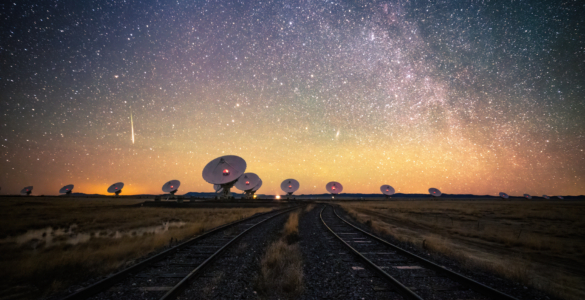Latest NRAO News
News is managed by NRAO News & Public Information. Questions about News? Have a story to share? Want to interview a scientist or create new media about our telescopes?

A groundbreaking solution has been developed to address the growing challenge of radio interference from satellite constellations on sensitive…

Using the U.S. National Science Foundation National Radio Astronomy’s Very Long Baseline Array (NSF NRAO VLBA), an international team of astronomers has solved a decade-long puzzle about one of the brightest cosmic neutrino sources in the sky. Their findings, published today in Astronomy & Astrophysics Letters, reveal that the blazar PKS 1424+240 – dubbed the “Eye of Sauron” for its striking appearance – points its powerful jet almost directly at Earth, creating an extreme cosmic lighthouse effect.

Astronomers using the U.S. National Science Foundation’s Very Long Baseline Array (NSF VLBA) and U.S. National Science Foundation’s Very Large Array (NSF VLA) have caught a supermassive black hole in the act of awakening from a long slumber, providing an unprecedented glimpse into the earliest stages of black hole activity.

New research has uncovered compelling evidence that water from a comet is strikingly similar to that found in Earth’s…

Astronomers have discovered a remarkably clumpy rotating galaxy that existed just 900 million years after the Big Bang, shedding…

The U.S. National Science Foundation Green Bank Observatory (NSF GBO) is entering a new era for the “Quiet Zone”—…





